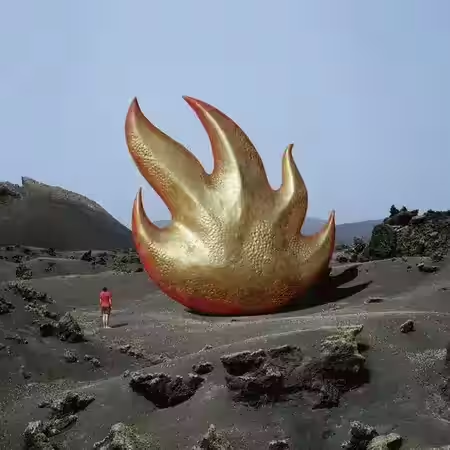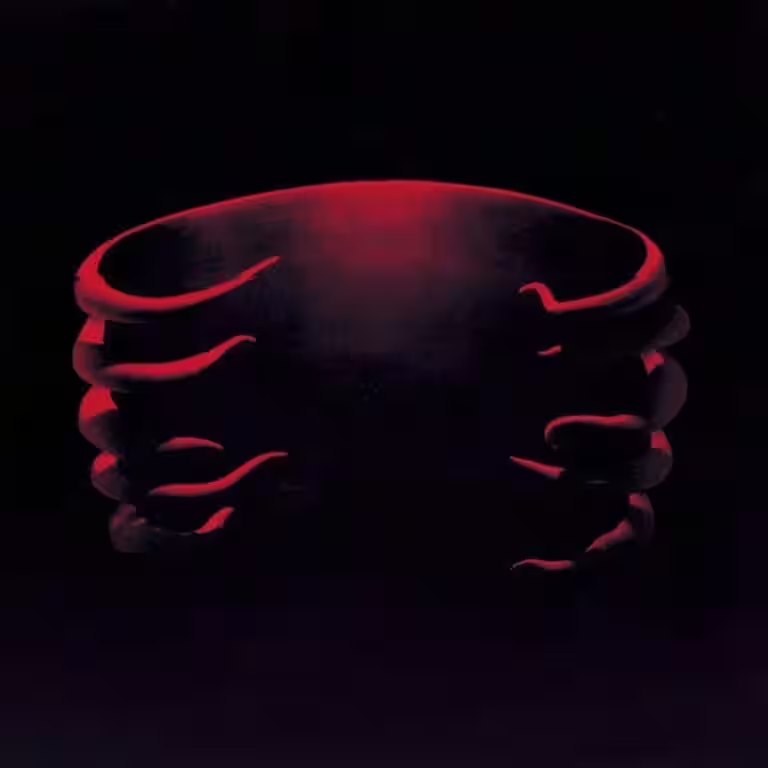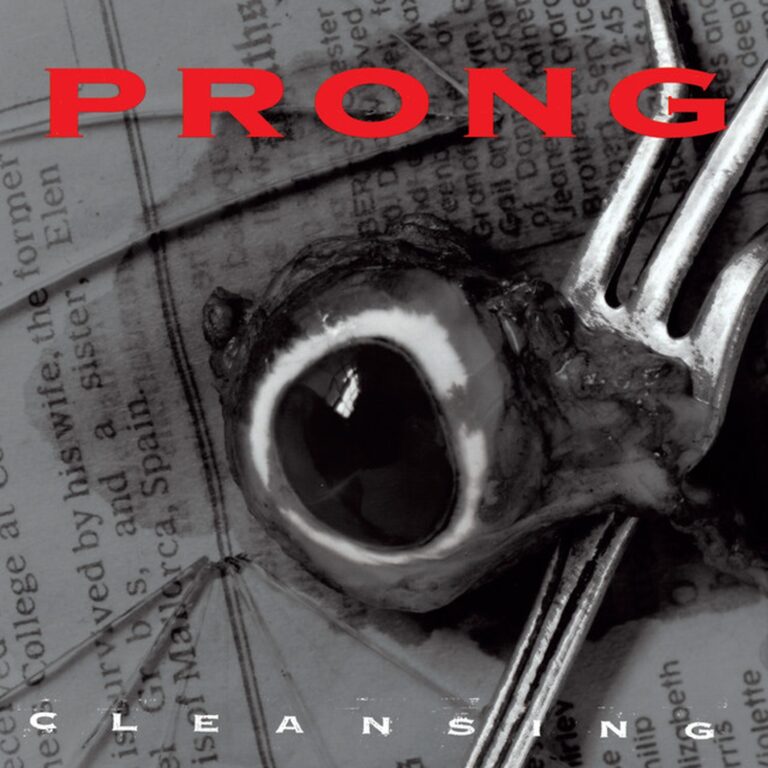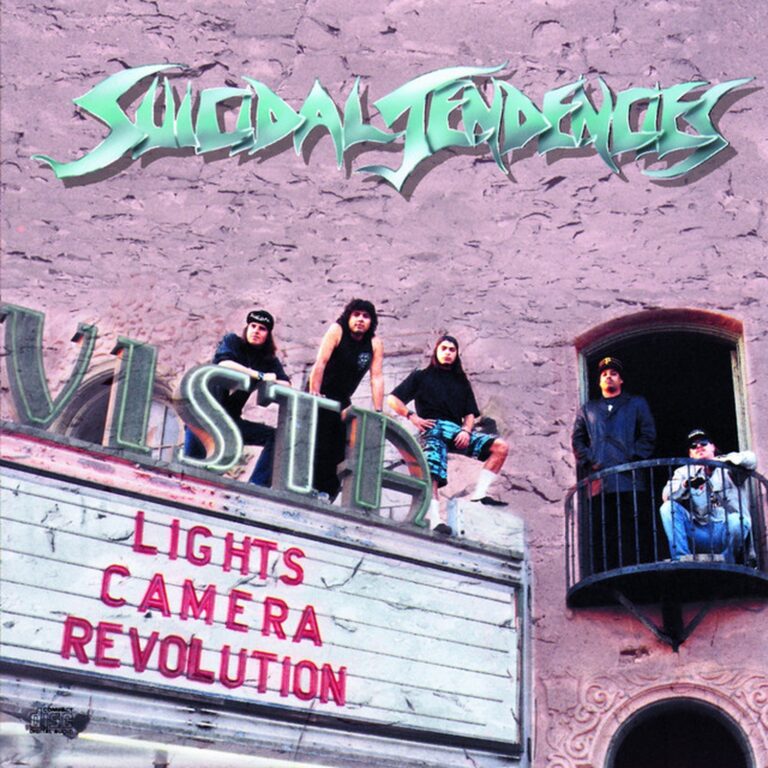
Audioslave by Audioslave: The Making of a Modern Rock Classic
Sometimes, a single album can alter the direction of rock music. In November 2002, Audioslave—the supergroup merging the fiery musicianship of Rage Against The Machine with the voice of Soundgarden‘s Chris Cornell—unleashed their debut, simply titled Audioslave. The world expected a clash of titans. Instead, it received a band forging a new identity, both raw and melodic, haunted and hopeful.
This article offers a comprehensive, expert analysis of Audioslave. You will discover the album’s genesis, recording process, commercial performance, track-by-track insights, lyrical meanings, and its impact on rock and alternative music. I will also explore its touring legacy, influences, media appearances, and the album’s enduring legacy in modern music culture. Whether you are a devoted fan or a curious newcomer, this deep dive will give you the definitive story of Audioslave.
| Attribute | Details |
|---|---|
| Release date | 18 November 2002 (UK), 19 November 2002 (US) |
| Album title | Audioslave |
| Genre | Hard rock, alternative rock |
| Total runtime | 65:26 |
| Number of tracks | 14 |
| Record label | Epic Records, Interscope Records |
| Recording studio | Cello Studios (Hollywood), Royaltone (Burbank), Litho & Studio X (Seattle), Akademie Mathematique of Philosophical Sound Research (Los Angeles) |
| Producer(s) | Rick Rubin, Audioslave |
Upon release, Audioslave made an immediate impact, debuting at number seven on the US Billboard 200 and quickly earning gold and then triple platinum status in the US alone. Its blend of heavy riffs, introspective lyrics, and Chris Cornell’s powerful vocals marked a shift from the political rage of the band’s origins to a more personal, existential sound. Guitarist Tom Morello described the album’s lyrics as “haunted, existential poetry” (Entertainment Weekly, 2002). Storm Thorgerson, who designed the cover, called the music “brooding and sultry,” reflected in the album’s now-iconic flame sculpture artwork.
We did a podcast episode all about Audioslave’s debut here:
The Genesis of “Audioslave”
To understand Audioslave, we must return to a moment of musical upheaval. In October 2000, Rage Against The Machine disbanded when Zack de la Rocha left, citing internal decision-making frustrations. Meanwhile, Chris Cornell was seeking new creative ground after Soundgarden’s 1997 split. Producer Rick Rubin, renowned for pairing unlikely collaborators, suggested a union. After a single jam session, chemistry was undeniable. The new group wrote 21 songs in just 19 days, a pace Morello later called “inspirational.”
Yet, this supergroup nearly never happened. In March 2002, management conflicts caused Cornell to walk away, cancelling planned Ozzfest dates. Six weeks later, after a management overhaul, he returned. Early demos leaked online as “The Civilian Project,” causing frustration within the band. Despite setbacks, the quartet persevered, determined to establish a sound distinct from their previous bands. Cornell later reflected, “It was a horrible personal crisis, but I was writing some of the best music of my life” (Wikipedia).
At the creative core stood four musicians:
| Band Member | Instrument / Role |
|---|---|
| Chris Cornell | Vocals, lyricist |
| Tom Morello | Guitar, co-songwriter |
| Tim Commerford | Bass, backing vocals |
| Brad Wilk | Drums |
The band’s label, Epic and Interscope, funded the sessions. The budget, while not public, matched expectations for a supergroup of this stature—rumoured in the hundreds of thousands of dollars. Financial stress surfaced with management disputes and the cost of buying the “Audioslave” name from a Liverpool band for $30,000 (Wikipedia). The album’s title, simply the band’s name, reflected a fresh start and a new identity, not tied to the politics of Rage or the darkness of Soundgarden.
The artwork, by Storm Thorgerson (of Hipgnosis and Pink Floyd fame), features a lone eternal flame sculpture on Lanzarote’s volcanic landscape. Thorgerson said, “It’s about music that burns forever.” The original design, with a nude man facing the flame, was rejected, but the chosen cover became instantly recognisable.
Recording Process
The sessions for Audioslave took place between May 2001 and June 2002, across several legendary studios. Cello Studios in Hollywood, known for its classic Neve desks and warm acoustics, provided the backbone. Royaltone in Burbank and Seattle’s Litho and Studio X added their own sonic character. Rick Rubin, a producer with a reputation for coaxing raw performances, co-produced alongside the band. Recording engineers included David Schiffman and Andrew Scheps, both seasoned in rock and alternative genres. Mixing was handled by Rich Costey, while mastering came from Vlado Meller.
Cello Studios, once home to the Beach Boys and Bob Dylan, offered vintage gear: Neve 8078 consoles, UREI 1176 compressors, and classic microphones such as Neumann U87s and AKG C414s. Guitar tones were shaped using Tom Morello’s trademark setup: a customised Fender Telecaster, Marshall JCM800 head, and DigiTech Whammy pedal. Tim Commerford’s bass sound relied on a Fender Jazz Bass through an Ampeg SVT amp, with complex signal splitting and distortion, often layered in the studio for extra depth (Reddit). Drums were tracked with a blend of close and room mics, capturing Brad Wilk’s powerful style.
Although the exact hardware list for each studio is not fully public, it is reasonable to assume the use of high-end analogue tape machines, vintage compressors, and a range of boutique pedals and effects. Studio X and Litho, both based in Seattle, are known for their intimate tracking rooms and extensive microphone collections, favoured by grunge-era producers.
Below is a table of likely hardware and techniques used in these studios during the making of Audioslave:
| Hardware/Technique | Studio(s) | Notes |
|---|---|---|
| Neve 8078 console | Cello Studios | Legendary for warmth and punch |
| UREI 1176 compressors | All studios | Classic vocal and drum compression |
| Neumann U87 / AKG C414 microphones | Cello, Litho, Studio X | Used for vocals, overheads, and amps |
| Fender Telecaster, DigiTech Whammy, Marshall JCM800 | All studios | Tom Morello’s signature guitar sound |
| Fender Jazz Bass, Ampeg SVT | All studios | Tim Commerford’s deep, gritty bass tone |
| Analogue tape machines | Cello Studios, Royaltone | Likely used for warmth and saturation |
| Room mic techniques | Studio X, Litho | Capturing drum ambience |
Rick Rubin’s production discography is extensive, but for context, here are some of his other albums (excluding Audioslave):
| Producer | Artist | Album | Year |
|---|---|---|---|
| Rick Rubin | Red Hot Chili Peppers | Blood Sugar Sex Magik | 1991 |
| Rick Rubin | Johnny Cash | American Recordings | 1994 |
| Rick Rubin | Rage Against The Machine | Evil Empire | 1996 |
| Rick Rubin | System of a Down | Toxicity | 2001 |
Recording was not without difficulty. Thirteen unfinished demos leaked online, which the band described as a “violation.” Cornell, meanwhile, was battling alcohol addiction, entering rehab in late 2002. The result, however, was a cohesive, powerful album that sounded both familiar and new.
Commercial Performance and Reception
When Audioslave arrived, expectations were sky-high. The album debuted at number seven on the US Billboard 200, selling 162,000 copies in its first week. By 2006, it had gone triple platinum in the US (over three million units), triple platinum in Australia, double platinum in Canada, and platinum in the UK and New Zealand. “Like a Stone” became the band’s biggest single, reaching number one on both the Billboard Modern Rock and Mainstream Rock charts, and earning a Grammy nomination for Best Hard Rock Performance.
Below is a table of Audioslave’s studio albums, with release years and US sales data where available:
| Album | Year | Sales Data |
|---|---|---|
| Audioslave | 2002 | 3 million+ (US) |
| Out of Exile | 2005 | Platinum (US) |
| Revelations | 2006 | Gold (US) |
Audioslave earned multiple certifications: triple platinum in the US, triple platinum in Australia, double platinum in Canada, and platinum in the UK and New Zealand. The singles “Cochise,” “Like a Stone,” “Show Me How to Live,” and “I Am the Highway” all reached the US top ten on rock charts. The album’s commercial success far outpaced most debut supergroup records of the era.
Several other landmark albums were released in 2002 by similar artists, including:
- Songs for the Deaf by Queens of the Stone Age
- By The Way by Red Hot Chili Peppers
- Riot Act by Pearl Jam
- Untouchables by Korn
- Comalies by Lacuna Coil
- Deliverance by Opeth
- Steal This Album! by System of a Down
During 2002, the heavy music world saw the formation of bands such as DevilDriver, Epica, and Sonic Syndicate. Bands like Alice in Chains and Megadeth disbanded, while Down and Trouble reformed. The year was also marked by the loss of Layne Staley (Alice in Chains) and John Entwistle (The Who).
Track Analysis
The singles from Audioslave—“Cochise,” “Like a Stone,” “Show Me How to Live,” “I Am the Highway,” and “What You Are”—were released between October 2002 and March 2004. “Like a Stone” topped both the Modern and Mainstream Rock charts in the US. Each single revealed a different side of the band: the explosive energy of “Cochise,” the melancholy of “Like a Stone,” the urgent plea of “Show Me How to Live,” and the road-weary wisdom of “I Am the Highway.”
Below is a detailed table of every song from the album, with length and writing credits. Singles are marked with an asterisk:
| Track Name | Length (sec) | Writing Credit |
|---|---|---|
| Cochise* | 62 | Cornell, Morello, Commerford, Wilk |
| Show Me How to Live* | 67 | Cornell, Morello, Commerford, Wilk |
| Gasoline | 55 | Cornell, Morello, Commerford, Wilk |
| What You Are* | 53 | Cornell, Morello, Commerford, Wilk |
| Like a Stone* | 76 | Cornell, Morello, Commerford, Wilk |
| Set It Off | 45 | Cornell, Morello, Commerford, Wilk |
| Shadow on the Sun | 54 | Cornell, Morello, Commerford, Wilk |
| I Am the Highway* | 63 | Cornell, Morello, Commerford, Wilk |
| Exploder | 45 | Cornell, Morello, Commerford, Wilk |
| Hypnotize | 40 | Cornell, Morello, Commerford, Wilk |
| Bring Em Back Alive | 40 | Cornell, Morello, Commerford, Wilk |
| Light My Way | 41 | Cornell, Morello, Commerford, Wilk |
| Getaway Car | 47 | Cornell, Morello, Commerford, Wilk |
| The Last Remaining Light | 40 | Cornell, Morello, Commerford, Wilk |
Note: Songs marked with * were released as singles: “Cochise,” “Show Me How to Live,” “What You Are,” “Like a Stone,” and “I Am the Highway.” “Like a Stone” reached number one on the Billboard Modern Rock Tracks chart. “Cochise” and “Show Me How to Live” also reached the top ten.
Song Meaning and Lyrics
Every lyric on Audioslave is loaded with meaning. The singles in particular offer a window into Chris Cornell’s mindset during a turbulent period. “Cochise” is not about the Apache leader, but rather, as Cornell put it, “me yelling at me, looking in the mirror” (Gavin Edwards). The name was chosen by Morello for its warpath-like musical energy. “Like a Stone” is often interpreted as a meditation on mortality and longing, with lyrics such as “In your house I long to be / Room by room patiently / I’ll wait for you there like a stone.” Fans and critics have debated whether it’s about lost love or Cornell’s spiritual searching (Reddit).
“Show Me How to Live” is a plea for guidance and meaning. Interpretations range from spiritual to existential. Deepti Rao wrote, “The phrase reflects a yearning for guidance and understanding in life… Lyrics suggest searching for authenticity and clarity amid chaos” (Quora). “I Am the Highway” is a declaration of independence and self-identity, with lines like “I am not your rolling wheels / I am the highway” signifying the singer’s refusal to be used or defined by others (Musixmatch).
All songs were credited to Cornell, Morello, Commerford, and Wilk. The collaborative process was essential, with Cornell writing all lyrics and the band composing music together. No guest artists appeared on the album.
Touring and Promotion of Audioslave
Promotion for Audioslave was relentless. The band’s debut performance was on the roof of the Ed Sullivan Theater for the Late Show with David Letterman—the first band ever to play on Letterman’s marquee. Their first paying concert was at KROQ’s Almost Acoustic Christmas in December 2002. Five singles were released, each with its own music video. “Cochise” featured a dramatic fireworks display, causing local panic and setting the tone for the band’s bold aesthetic.
The band toured extensively in 2003, playing 87 concerts and appearing at festivals like Download (Donington, UK) and Pinkpop (Netherlands). Setlists drew heavily from the debut album, with highlights including “Cochise,” “Like a Stone,” and “Show Me How to Live.” In the US, they played alongside acts such as Seether and Thirty Seconds to Mars, and made appearances on television shows including The Tonight Show with Jay Leno.
In 2002, Audioslave shared festival bills with Pearl Jam, Queens of the Stone Age, and other top alternative and metal acts. Their high-energy performances and Cornell’s vocals quickly established them as a major live force.
Influences and Legacy
Audioslave’s sound drew on a deep well of influences. The band blended the riff-driven heaviness of Led Zeppelin and Black Sabbath with the alternative edge of Soundgarden and the funk-metal groove of Rage Against The Machine. Chris Cornell’s lyrics shifted away from politics, focusing on existential themes, spirituality, and personal struggle. Tom Morello said the band’s music was “a wider scope than Rage… we could do slower, more melodic songs” (Entertainment Weekly).
Below is a table of key influences and artists influenced by Audioslave:
| Influences on “Audioslave” | Artists Influenced by “Audioslave” |
|---|---|
| Led Zeppelin | Shinedown |
| Black Sabbath | Alter Bridge |
| Soundgarden | Nothing More |
| Rage Against The Machine | Royal Blood |
| Funk, soul, and 1970s hard rock | Younger alternative and hard rock bands |
The album’s 2002 release year was a period of global change. The euro became legal tender in 12 EU states. The Salt Lake City Winter Olympics took place. MTV’s The Osbournes premiered, and Spider-Man became a box office smash. The music world lost icons such as Layne Staley and John Entwistle, while Bowling for Columbine and The Wire reflected a shifting cultural landscape. Audioslave arrived as a statement of reinvention and hope amid uncertainty.
Five Things about Audioslave
Here are five fascinating facts about Audioslave, all drawn from verified sources:
| Fact | Details |
|---|---|
| First band to play on Letterman’s marquee | Audioslave performed on the roof of the Ed Sullivan Theater for their debut TV appearance |
| “Cochise” video caused local panic | Fireworks in the video led neighbours to believe there was a terrorist attack |
| Album artwork by Storm Thorgerson | Designer of Pink Floyd’s The Dark Side of the Moon and Wish You Were Here |
| All band members contributed to songwriting | Every track credited to Cornell, Morello, Commerford, and Wilk |
| Unreleased “Civilian Project” demos leaked | 13 unfinished tracks leaked online months before release |
Media and Television Usage
Songs from Audioslave have appeared in numerous films, TV shows, and games. Below is a table of confirmed media placements:
| Song Title | Media | Year |
|---|---|---|
| Cochise | Iron Man (film) | 2008 |
| Cochise | Friday Night Lights (TV) | 2007 |
| Cochise | Talladega Nights: The Ballad of Ricky Bobby | 2006 |
| Show Me How to Live | CSI: NY (TV) | 2009 |
| I Am the Highway | One Tree Hill (TV) | 2006 |
| Shadow on the Sun | Collateral (film) | 2004 |
| Exploder | Top Gear (UK) | 2012 |
| Bring Em Back Alive | Top Gear (UK) | 2007 |
Critical Reviews and Retrospectives
Upon release, Audioslave received mixed reviews. AllMusic gave it 3/5, noting “some songs reached their potential, others fell short.” Pitchfork was far harsher, scoring it 1.7/10 and calling the lyrics “complete gibberish.” Stylus Magazine gave it an F, criticising overproduction. Yet, others praised its classic rock influences and compared the band’s sound to Led Zeppelin and Black Sabbath. In 2005, Audioslave was ranked number 281 in Rock Hard magazine’s “The 500 Greatest Rock & Metal Albums of All Time.” The album’s Metacritic score stands at 62/100, reflecting a split in critical opinion (Wikipedia).
After Audioslave
After Audioslave, the band recorded Out of Exile (2005), which debuted at number one in the US, and Revelations (2006), which explored funk and soul influences. By February 2007, Chris Cornell left, citing “irresolvable personality conflicts and musical differences.” The band split, with Morello, Commerford, and Wilk reuniting with Zack de la Rocha for a Rage Against The Machine reunion. Cornell pursued a solo career, releasing Carry On and Higher Truth before his death in 2017. Audioslave briefly reunited in 2017 for the Anti-Inaugural Ball, but further activity ended with Cornell’s passing.
Conclusion
Even after two decades, Audioslave remains a defining album of the 2000s. It brought together musicians from two iconic bands, channelled their creative tension, and produced a record that feels both timeless and deeply personal. The album’s mix of heavy riffs, soulful lyrics, and genre-blending innovation has influenced a generation of rock musicians. Today, it stands as a testament to the power of reinvention and the enduring appeal of honest, passionate music.
Further Reading
For more on related artists and albums, see our own Riffology content:
- A Complete History of Rage Against the Machine (blog article)
- Soundgarden’s Badmotorfinger: Grunge Meets Alternative Metal (blog article)
- The Making of Temple Of The Dog by Temple Of The Dog (blog article)
- Inside Renegades: Rage Against the Machine’s Bold Farewell (blog article)
- Audioslave: Soundgarden Meets Rage (podcast)
External resources:
Let us know in the comments what your thoughts are on Audioslave by Audioslave. Did we miss anything? Share your experiences and join the conversation!



